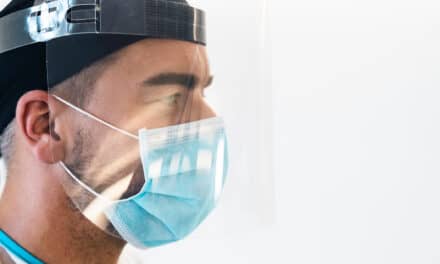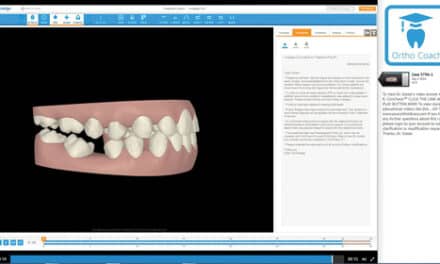by Max Anderson, DDS, MS, MEd
 |
Orthodontic Products: How can orthodontists help patients with eating disorders?
Max Anderson, DDS, MS, MEd: I would say what is key is that orthodontists get an opportunity to deal with this problem, to participate in discovering people with eating disorders so we can help them. Eating disorders are most prevalent in adolescents, which is, of course, the prominent age group in orthodontic practice, and in particular among females age 15 to 19.
OP: What percentage of your patients suffer from this disorder?
Anderson: There isn’t as yet a great deal of reliable data on this, but according to a national survey of college-age students done in 1997, about 5% of the females and less than 1% of the males were involved in one eating disorder or another. So that’s about six out of 100 who have one or more forms of this disorder, which is actually a rather high number considering the potential consequences.
 |
| Max Anderson, DDS, MS, MEd |
OP: What do you look for as signs of this problem?
Anderson: We look for both the signs and the symptoms of these disorders, and I want to draw the distinction between “signs” and “symptoms.” Signs are physical findings, findings of fact; whereas symptoms are the messages, often subtle, that orthodontists—in fact, all health care providers—analyze when working with patients. It could be more obvious, such as the patient talking about their symptoms, but it could also be the tacit understanding of what’s going on with your patient.
OP: What might be an example of a sign and related symptom?
Anderson: As it relates to bulimics, for instance, one of the signs that these people usually have is erosion of tooth enamel resulting from the regurgitation pattern that is always present with bulimia. Caused by hydrochloric acid from the stomach, the erosion generally occurs on the lingual of the teeth, and the orthodontist can see that, so that’s an overt sign of the disorder. The teeth can become thinner and more translucent, so they look more fragile.
A symptom, on the other hand, would be a lack of self-esteem, which occurs in virtually all of the eating-disorder patients. That’s often hard to characterize, but we recognize it implicitly in our patients.
OP: What about anorexia?
Anderson: In the case of an anorexic, a major sign, of course, would be really low body weight, being skinny beyond where they should be. These people are not purging through regurgitation or doing anything to rid themselves of food they’ve eaten—they’ve just basically quit eating or are eating non-food stuff. So there are these physical signs that we get the opportunity to see, and there are symptoms that require our ability to understand that the patient has a pathology going on related to their own self-image.
OP: Are there any eating disorders in addition to bulimia and anorexia?
Anderson: There are three general classifications of major disorders, anorexia and bulimia being the first two. Then there’s also compulsive overeating. Any true eating disorder is an illness that pervades all aspects of a sufferer’s life and has a profound effect on his or her health and psychosocial system.
All of these disorders are involved in orthodontics because orthodontists see a cross-section of society, and these pathologies are not associated with any socioeconomic status. You’re not looking at one particular group. The problem spans the entire population, so orthodontists get a chance to see all of these disorders.
OP: Which of these disorders do you considered the most serious?
Anderson: All of these, depending on the actual characterization of the illness in any individual, can be lethal. They can all cause organ damage, with overeating leading to diabetes, cholesterol and blood pressure problems, and anorexia and bulimia causing many problems related to lack of nutrients. With anorexics, once they’re diagnosed and if they’re really emaciated, the first thing to do is get them hospitalized to try to get their weight back up.
OP: Have you ever had a case requiring hospitalization?
Anderson: No, I have not. I’ve never had a drastic case, but I’m aware of them in our community. I’ve seen people with mild to moderate issues, and I consider my role to spot the problem and help prevent further damage to the patient.
OP: What role can orthodontists take in treatment?
Anderson: Basically, it’s an opportunity for orthodontists to discuss the problem with the patient and make referrals. Our role as orthodontists is, first, to communicate with the patient, then, if the patient is a child, with the adult caregiver, and then make referrals to the appropriate medical practitioner, starting with the primary care physician.
Knowing how to discuss these matters with a young patient is important. With those showing enamel erosion as a sign of possible bulimia, for instance, I might start a discussion about whether they are sometimes troubled by GERD (gastrointestinal reflux disease, which produces excessive acid), as a way of getting into the problem.
OP: Is there any type of direct treatment you can provide?
Anderson: Other than referrals, the only type of treatment I might provide for bulimics, for instance, would be implementing a fluoride strategy to protect the remaining tooth structure. I would get patients to use fluoride mouth rinses to remineralize the eroded areas. I would also advise them to rinse immediately after regurgitating to reduce the harmful effects of the stomach acid.
For anorexics, there could be all sorts of periodontal issues from not ingesting enough nutrients. Again, communication about the problem with the primary care physician is crucial, as it is for any eating disorder.
OP: Are you satisfied with the current level of expertise in orthodontics regarding eating disorders?
Anderson: I think a lot of these cases go undiagnosed, and I’m willing to bet you that’s partly because there’s no reporting requirement of EDs [eating disorders] for the CDC [Center for Disease Control and Prevention], so there isn’t yet a systematic collection of data.
|
To read more interviews with orthodontists, see “Profiles & Interviews” from our main navigation bar. |
I think this will change because of the new requirements involved in electronic health records that are being mandated by the government, so I’m optimistic about that.
OP: What advice do you have for other orthodontists in the treatment of eating disorders?
Anderson: I would say to be aware that these problems exist, and always have it in mind. My greatest concern is that we might miss one, and somebody might die because we didn’t intervene.
Max Anderson, DDS, MS, MEd, completed a career in the United States Navy in 1990 and has served on the faculty of the University of Washington and Indiana University. He is engaged in research activities at the University of California at Los Angeles, where he is investigating mechanisms to eradicate dental caries through intelligent drug design. He chairs the ADA’s Standards Committee on Dental Informatics subcommittee on the Continuity of Care Record (the referral record for dentistry). He is the president and CEO of C3 Jian Inc, a California-based biotechnology company developing targeted antimicrobial drugs, diagnostics, and mineralization modulation molecules. He can be reached at










